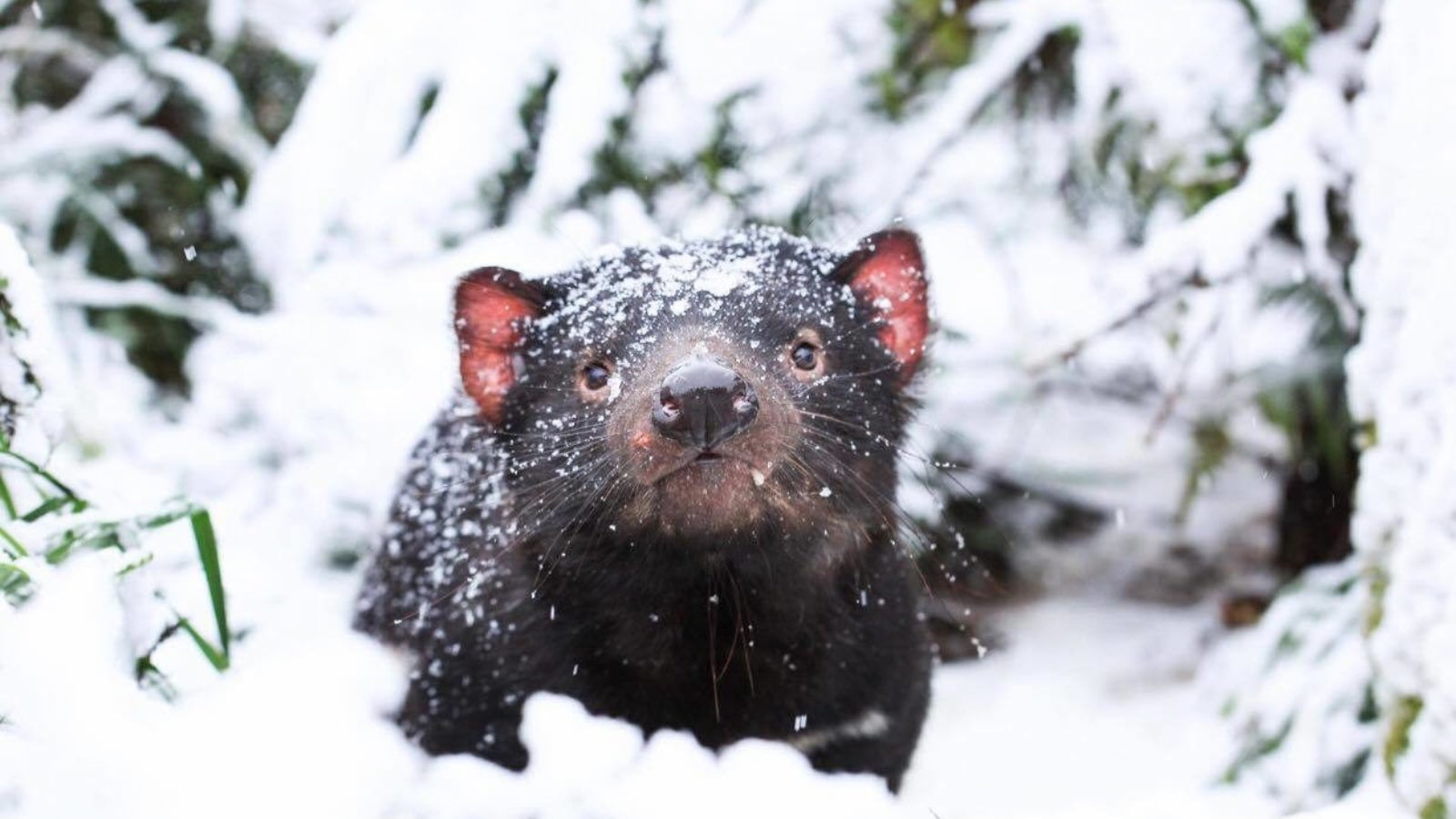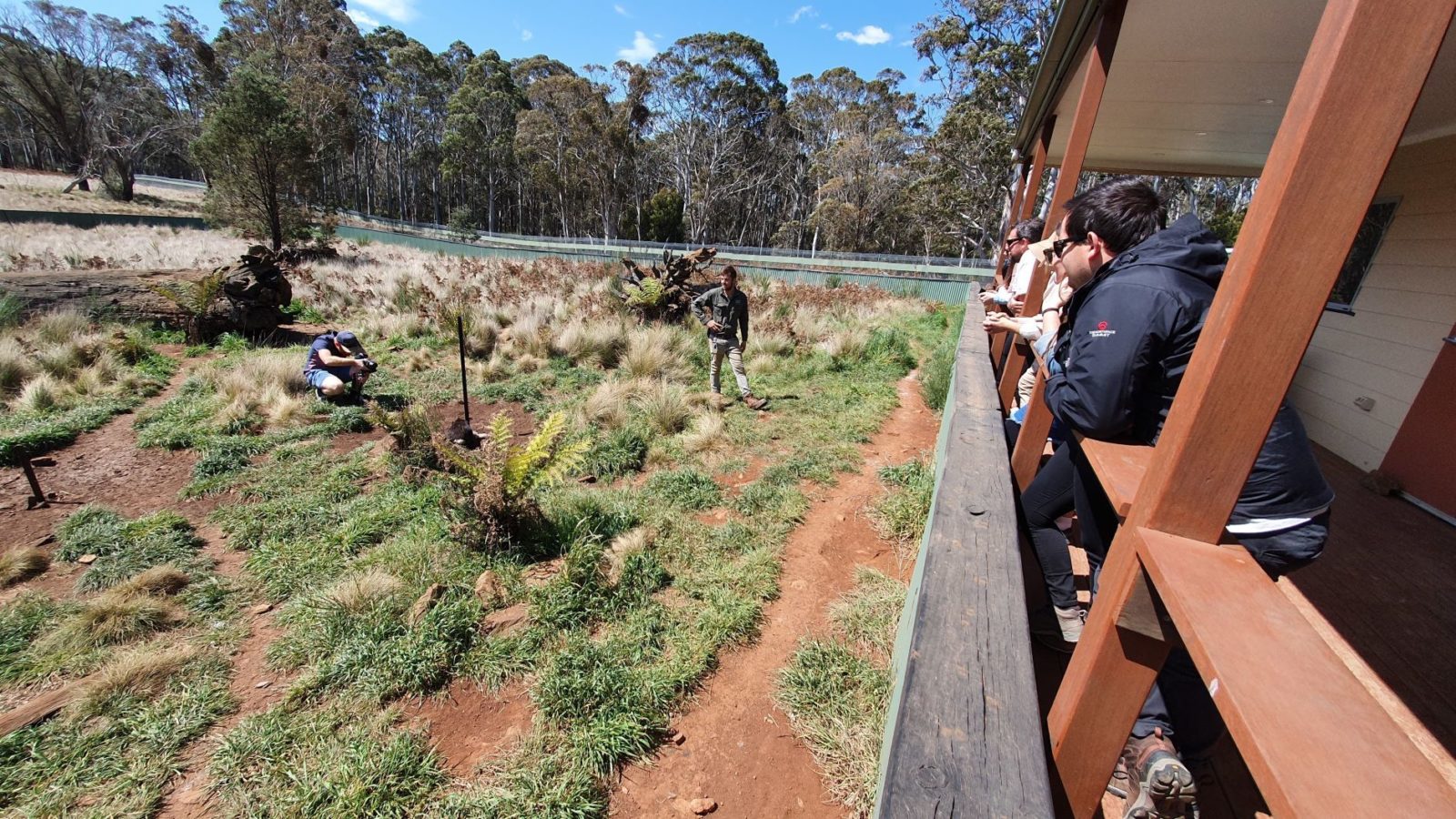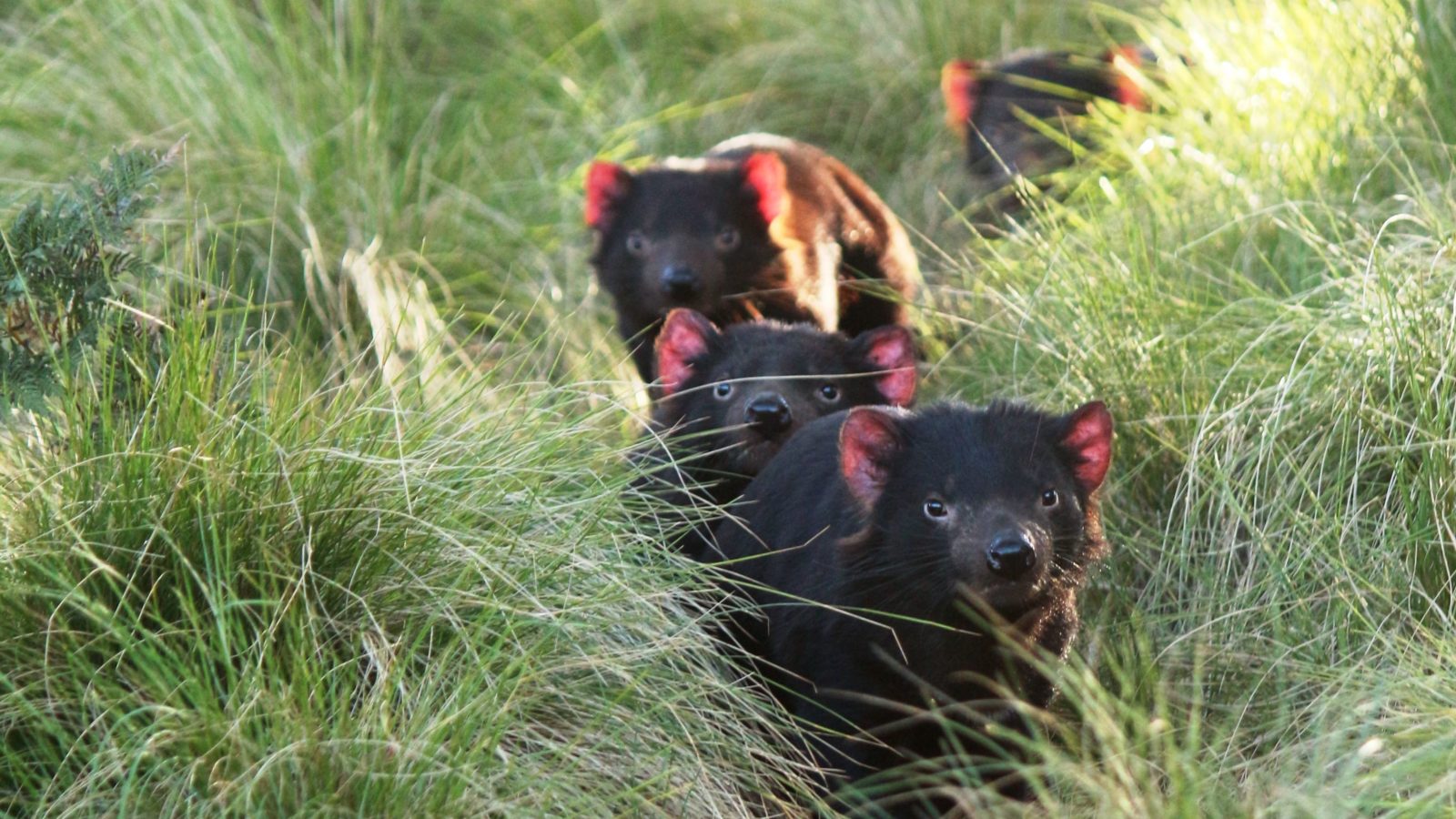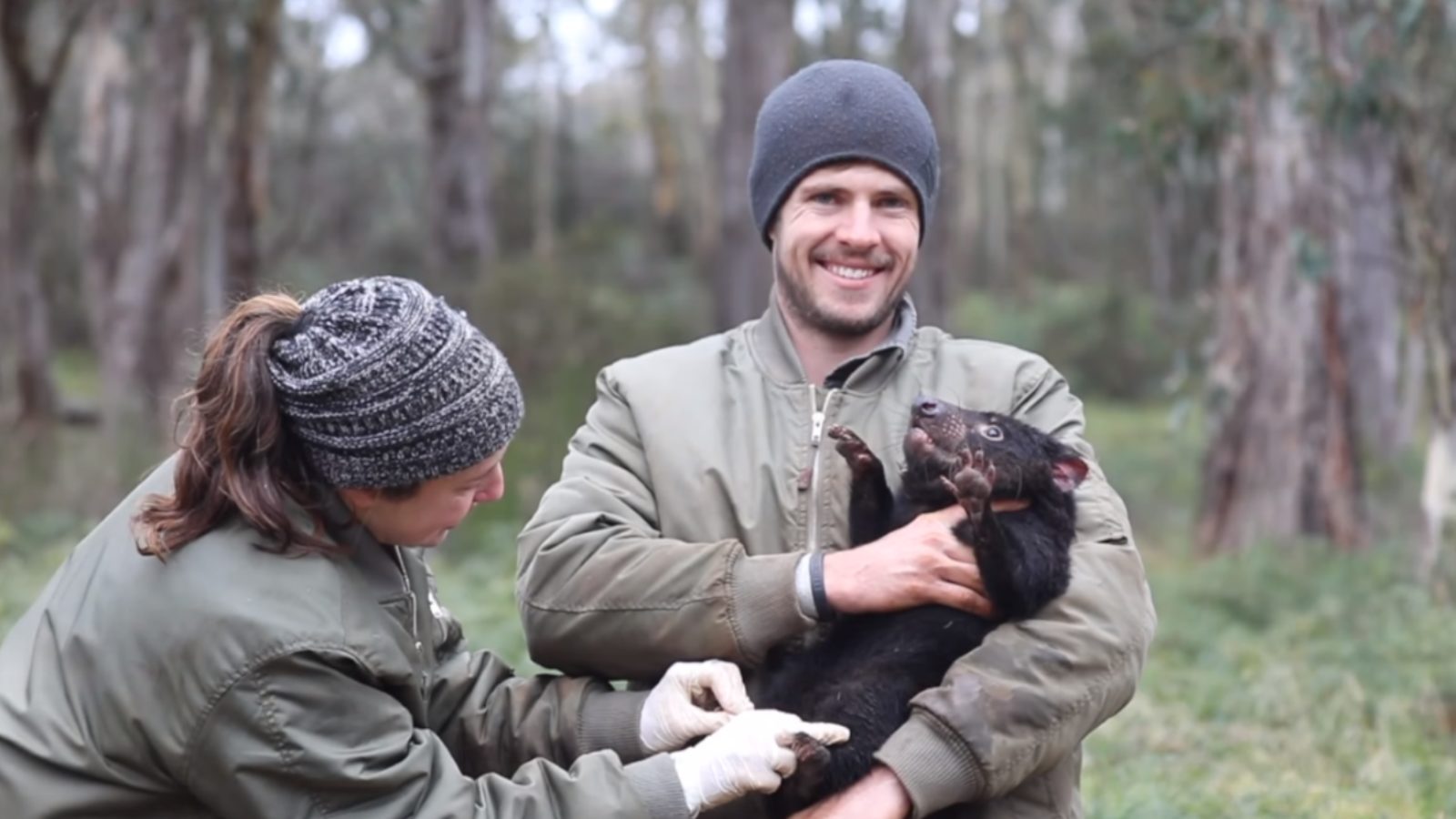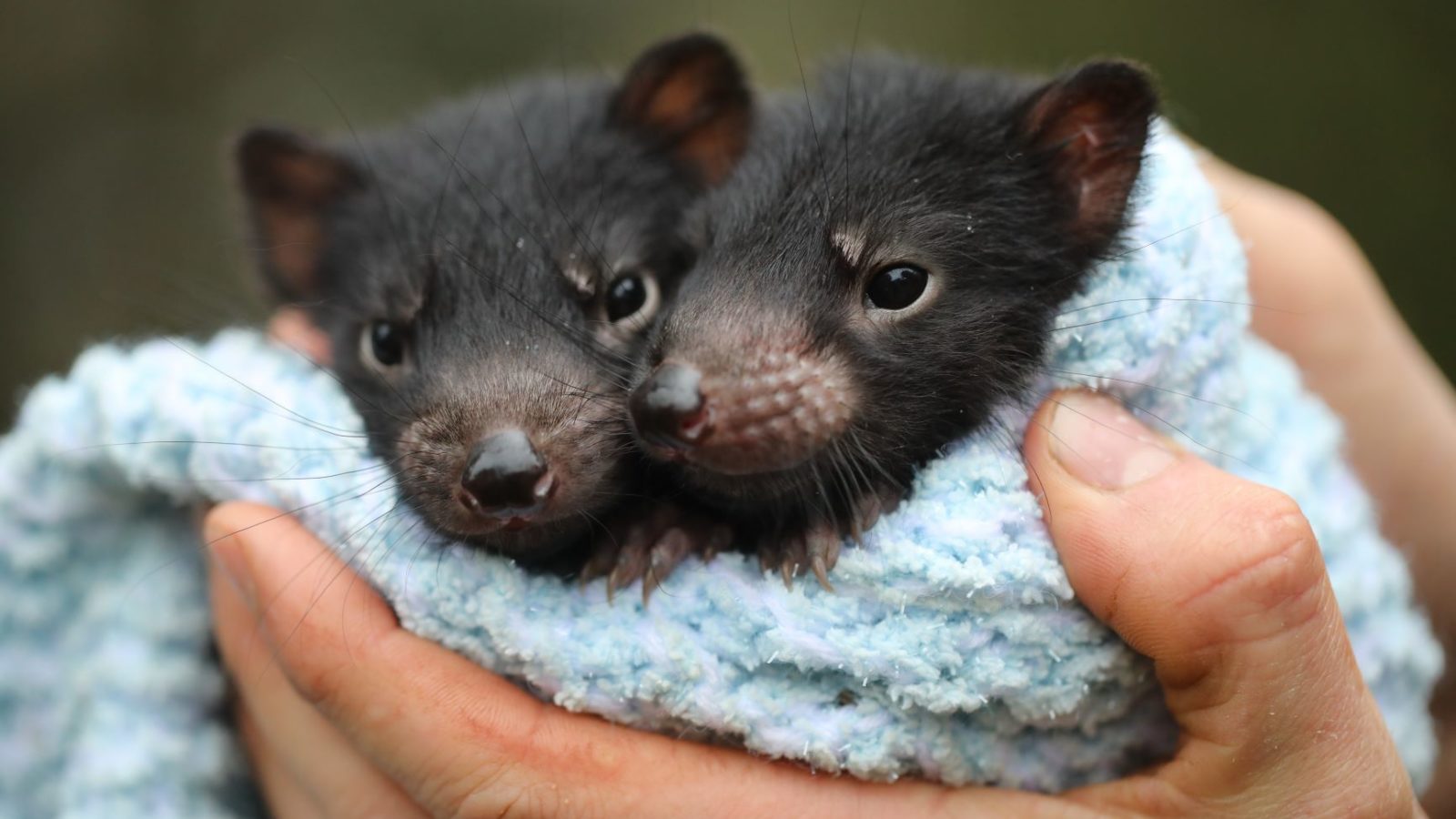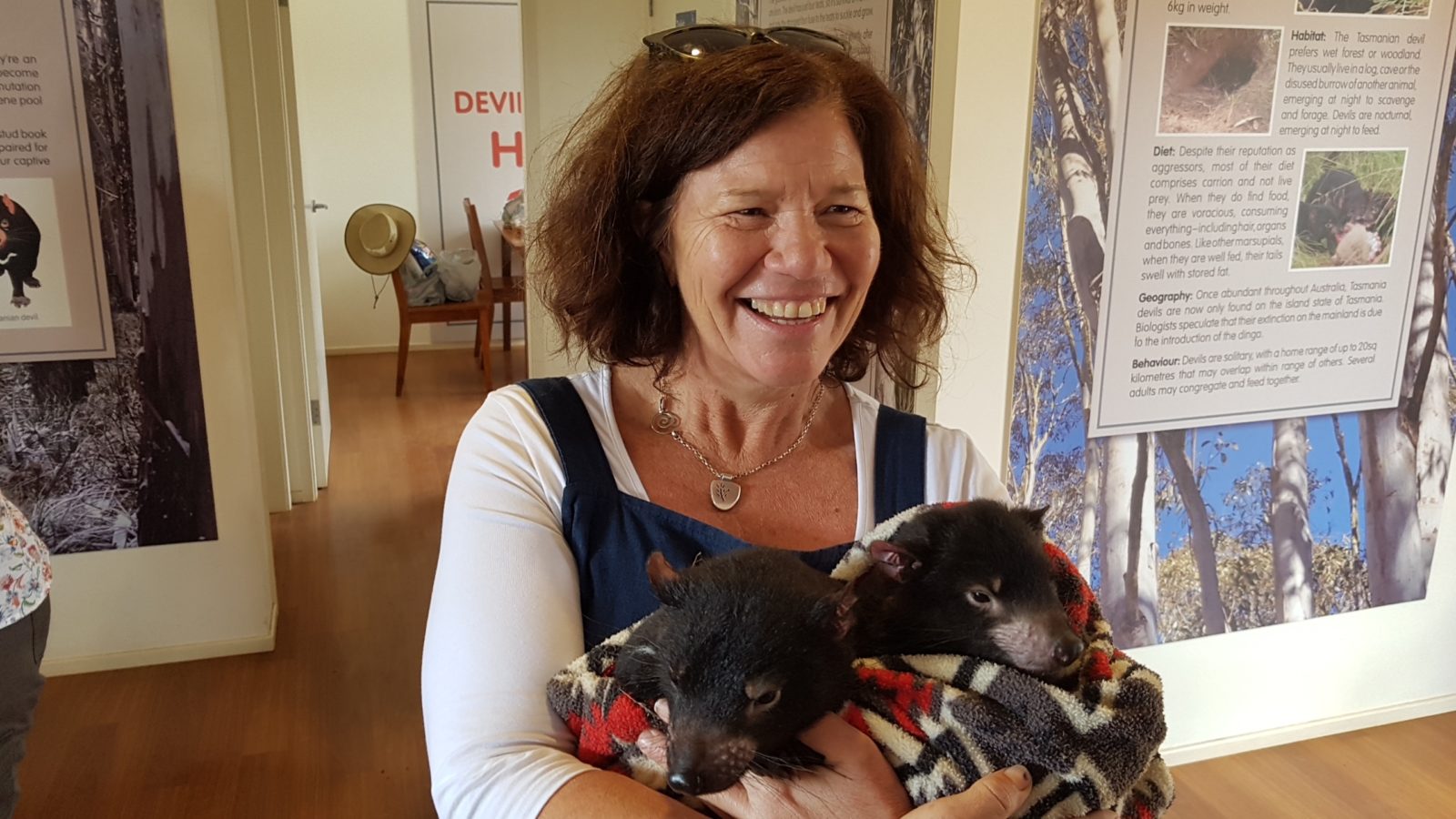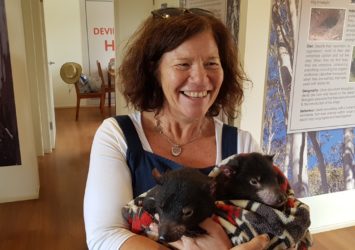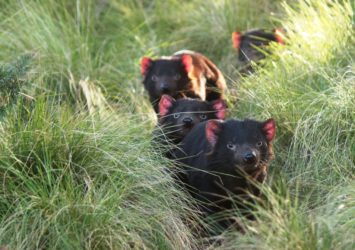Aussie Ark conservation facility is hidden high in Barrington Tops, successfully fulfilling its vision of creating a long-term future for our threatened Australian species. Aussie Ark is securing wild sanctuaries to conserve our native wildlife, free from unnatural predation. Here are just a few of their worthy species being saved from extinction.
Tasmanian devils
Even Bugs Bunny would love these.
The Tasmanian devil is the world’s largest surviving marsupial carnivore and was once found on the mainland of Australia, but now only found in Tasmania. The Tasmanian devil typically weighs between 8-14 kg (males) or 5-9 kg (females) and their body length varies from 57 cm in females to around 65 cm for males. The Tasmanian devil has a very short lifespan. In the wild, a healthy, disease-free devil can live up to 5-6 years old, in captivity they may live up to 8 years.
Throughout the 1800s there was a concerted effort by Tasmanian farmers to eradicate the species, which were thought to kill livestock. Thankfully, the devil did not suffer the same fate as its relative the Tasmanian tiger. Devils are now a protected species, but their survival is threatened by something far more insidious. Devil Facial Tumour Disease (DFTD) is an infectious cancer that only affects Tasmanian devils. DFTD is transmitted through biting, fighting and mating and is one of the only cancers known to spread as a contagious disease. It was first detected in 1996 and since then, 90% of the wild population has gone.
This is where Aussie Ark has stepped in, and is now Australia’s largest mainland breeding facility for the Tasmanian devil, free from DFTD.
On 18 November 2015, the first-ever contingent of 22 Barrington Tops Devils from Aussie Ark were released in four allocated sites on the Forestier Peninsula off the east coast of Tasmania near Hobart. These Barrington Tops devils are a mix of males and females of varying ages and were selected based on their genetic diversity and wild trait behaviours. They joined 18 others from other conservation projects for their release into the wild.
Veterinary health checks, conditioning and monitoring were first completed to ensure that the 22 devils were in tip-top shape ready for their release. Each devil was photographed for all their markings (rump, shoulders, chest and face) for ease of identification.
On the evening before they were transported to Tasmania, their furs were combed to check for seeds and their feet dipped into an anti-bacterial cleanser to avoid any possible transmission of invasive species entering Tasmania.
The 22 Barrington Tops devils were freighted in individual boxes from Aussie Ark to Scone airport in a truck before getting on a private plane, like the Hollywood superstars they are. Once in Tasmania, they were released in one of the four allocated sites and started their new journey.
Animal facts
- Common name: Tasmanian devil
- Scientific name: Sarcophilus harrisii
- Conservation status in NSW: Endangered

Parma wallabies
Does your engineer wear a white moustache too?
The Parma wallaby is a small shy, cryptic creature of the wet sclerophyll forests of southern New South Wales and is a vulnerable species in Barrington Tops. It’s part of a conservation project by Aussie Ark.
This beautiful resident of Barrington Tops with the white moustache is an ecosystem engineer, playing a significant role in ecological functionality and habitat restoration. The white moustache suits this little engineer, don’t you think?
The Parma wallaby is small with a head and body length up to 52 cm. Fur is a uniform greyish-brown on the back and shoulders with a dark stripe along the spine ending mid-back. It has a white stripe on the cheek and upper lip and a white belly. (Yes, a moustache!) When hopping, it remains close to the ground in an almost horizontal position with the forearms tucked tightly against the body, and the tail curved upwards in a shallow U-shape.
Parma wallabies occupy rainforests and sclerophyll forests with a dense understorey and grassy areas. It is found only in areas of the Great Dividing Range in New South Wales, from the Watagan Mountains in the south to the Gibraltar Range in the north.
Read more about these beautiful vulnerable animals on the Aussie Ark website
Animal facts
- Common name: Parma wallaby
- Scientific name: Macropus parma
- Conservation status in NSW: Near threatened
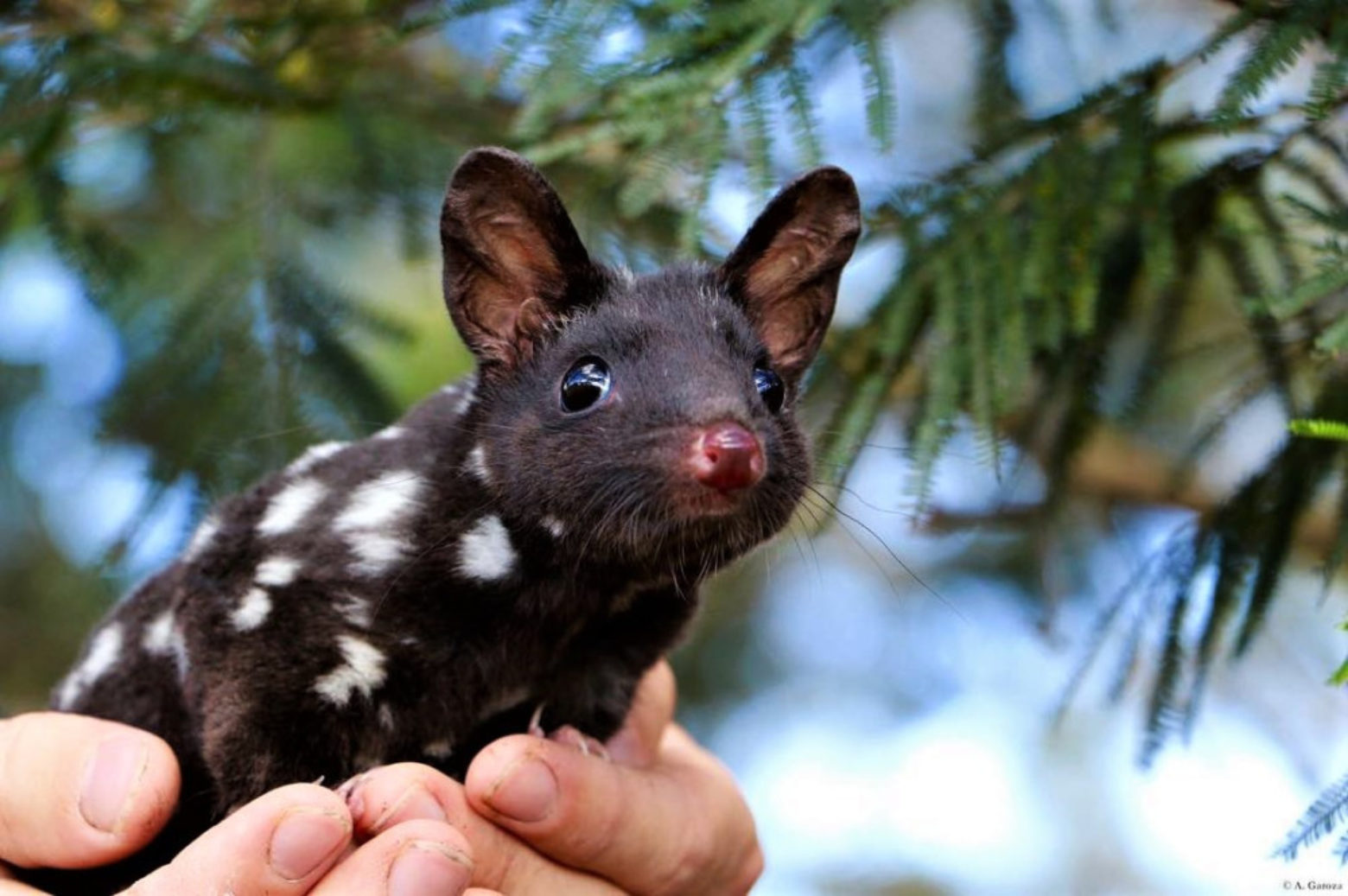
Eastern quolls
Do you like a crocodile smile on your cute marsupials?
The Eastern quoll is an endangered species and is part of a conservation project by Aussie Ark. This carnivorous marsupial is super cute but hides a fearsome set of sharp teeth that makes it a natural predator for maintaining balance in the bush. Kind of like a crocodile but smaller and furrier!
The Eastern quoll is a medium-sized carnivorous dasyurid marsupial that once inhabited most of southeast Australia. It is believed that the Eastern quoll became extinct on the mainland in 1963 due to the introduction of the red fox and feral cats, yet they survive in Tasmania without these predators.
Dasyurids are characterised by a biting and cutting dentition with four pairs of pointed upper incisors and three lower pairs; well developed upper and lower canines; two or three pairs of upper blade and lower blade-like premolars and four pairs of upper and lower molars with sharp, shearing cusps. Kind of like a crocodile.
The Eastern quoll is one of six surviving species of quolls. Aussie Ark has identified the Eastern quoll as a key species as it plays an important role as an ecosystem engineer, scavenging on carrion on the forest floor. They are also a natural predator maintaining balance in the bush.
Read more about these beautiful vulnerable animals on the Aussie Ark website
Animal facts
- Common name: Eastern quoll
- Scientific name: Dasyurus viverrinus
- Conservation status in NSW: Endangered
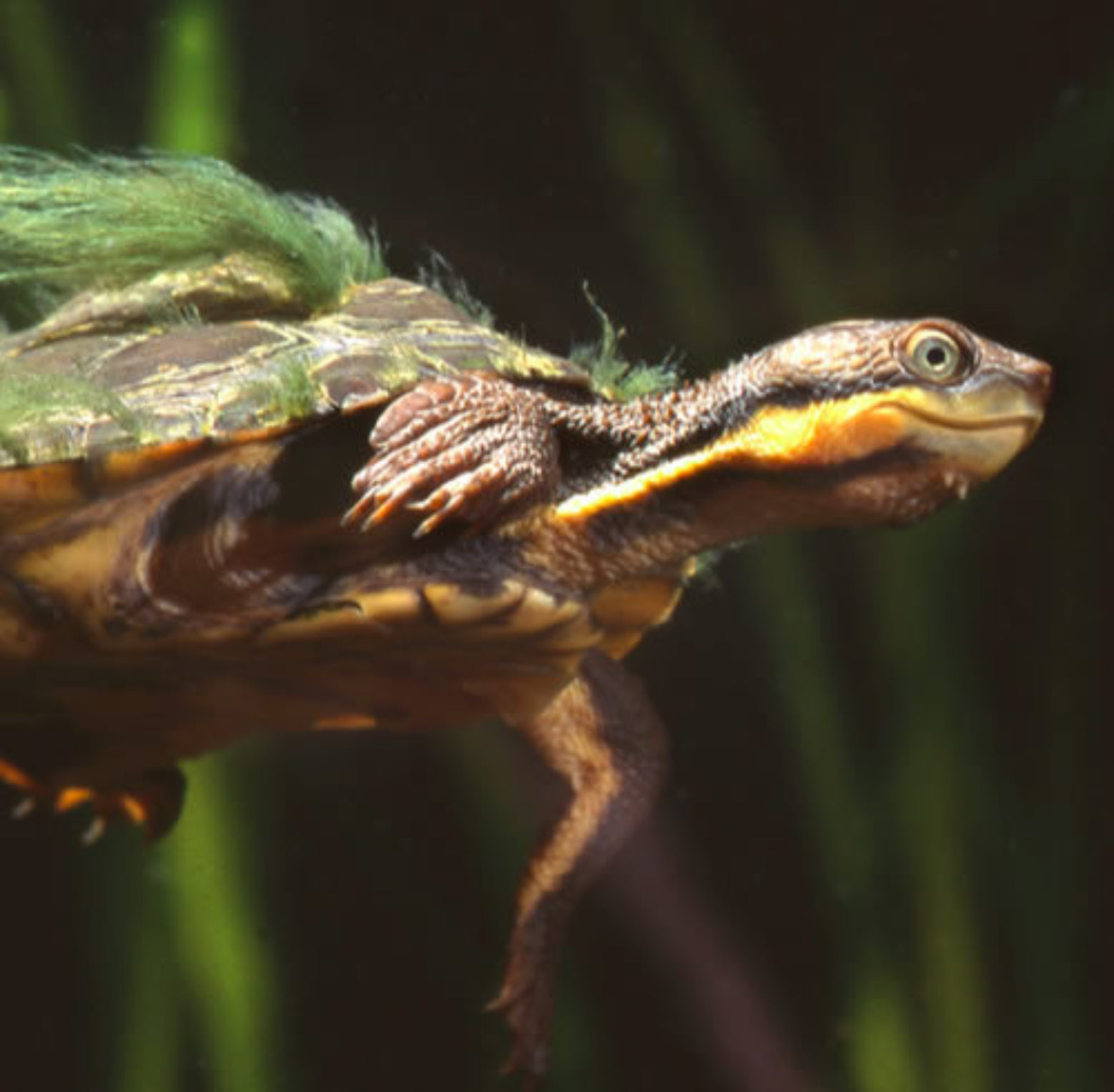
Manning River turtles
Black and yellow speed stripes for this aquatic cleaner.
Freshwater turtles are nature’s little vacuum cleaners, keeping aquatic vegetation in balance and maintaining our stunning waterways as healthy ecosystems.
The Manning River helmeted turtle is found only in the middle and upper stretches of the Manning River catchment area. It’s another unique species that’s being rescued by the conservation experts at Aussie Ark, hidden high in Barrington Tops.
Predation is a key threat to this amazing little turtle, with the introduced feral fox and feral pig the primary threats. They feed on eggs, young turtles, and even mothers as they lay their eggs in nests on the river’s bank. Other threats including degradation of habitat, human interference and poaching.
These turtles are predominately diurnal, often seen basking on logs, rocks or the river banks near deep pools, although nocturnal foraging in shallow areas has been observed. The Manning River turtle is thought to be omnivorous like similar turtle species. It is estimated that this turtle species has a lifespan of approximately 20 years.
This striking medium sized freshwater turtle is recognised by their distinctive yellow markings on the underside of its shell, and tail, as well as a clear yellow stripe from the jaw, down to the neck of the shell.
In the case of the Manning River turtle, they require clean, flowing substantial bodies of water to thrive. They are only found in relatively shallow, clear, continuously fast-flowing rivers with rocky and sandy substrates.
Animal facts
- Common name: Manning River turtle
- Scientific name: Wollulmbinia Purvisi
- Conservation status in NSW: Endangered
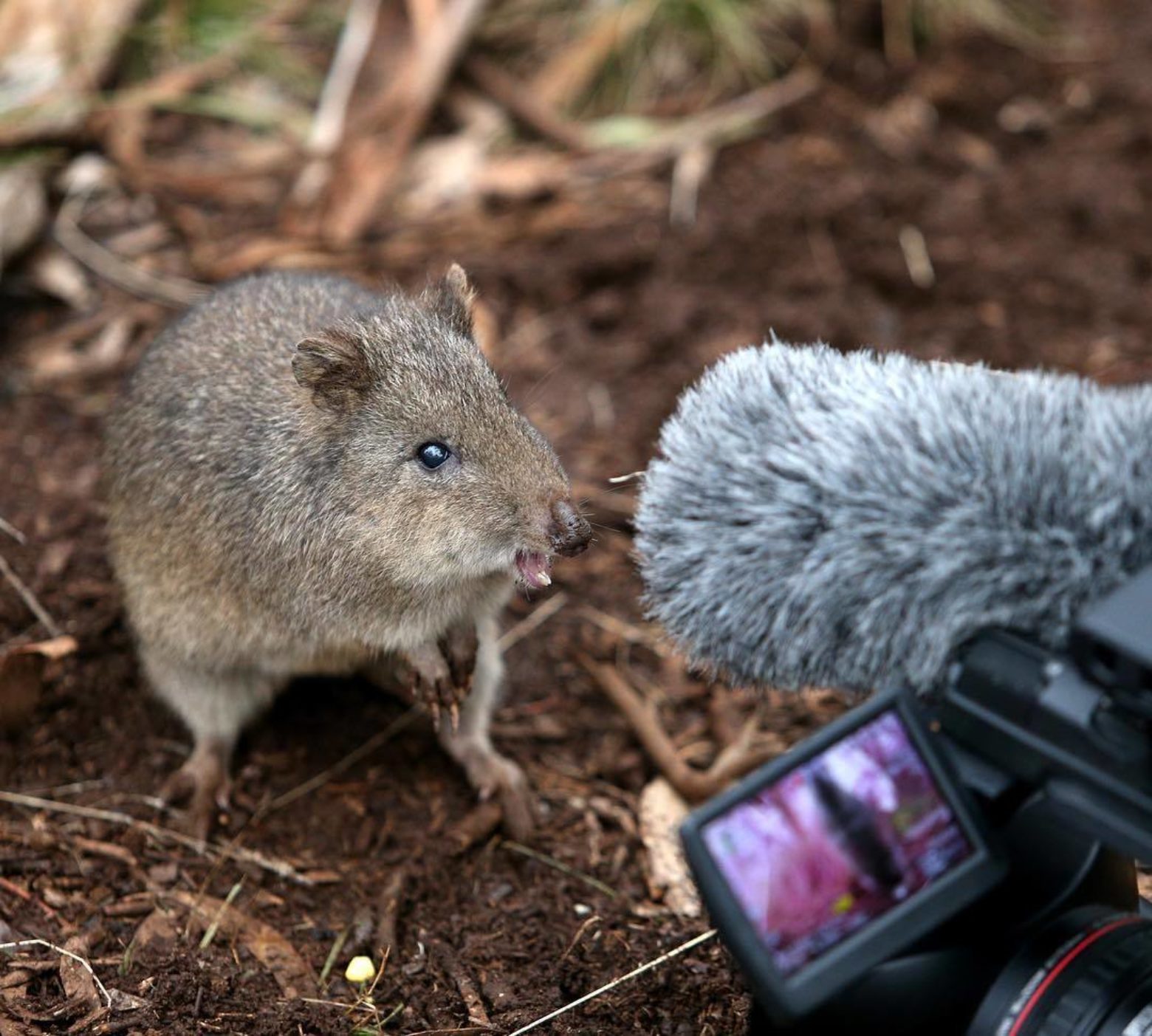
Potoroos
The potoroo and the paparazzi: “Honestly, how’s a potoroo supposed to have a private holiday?!”
The potoroo is a living fossil, having remained relatively unchanged for around 10 million years but now it’s threatened by habitat loss and predation by foxes, wild dogs and cats.
The Long-nosed potoroo is one of the smallest and most ancient members of the kangaroo family. It’s another unique species that’s being rescued by the conservation experts at Aussie Ark, hidden high in Barrington Tops.
The Long-nosed potoroo is an ecosystem engineer improving the health of the forest by dispersing a host of beneficial fungi spores as they forage and move around. These fungi, which form a major part of their diet, assist eucalypt and acacia trees absorb more water and nutrients, and essential for seedling survival. It also plays a key role in reducing the chance of fires by grazing undergrowth and turning over leaf litter.
Photo in Barrington Tops by www.instagram.com/shootlorimer
Animal facts
- Common name: Long-nosed Potoroo
- Scientific name: Potoroos tridactylus
- Conservation status in NSW: Vulnerable
